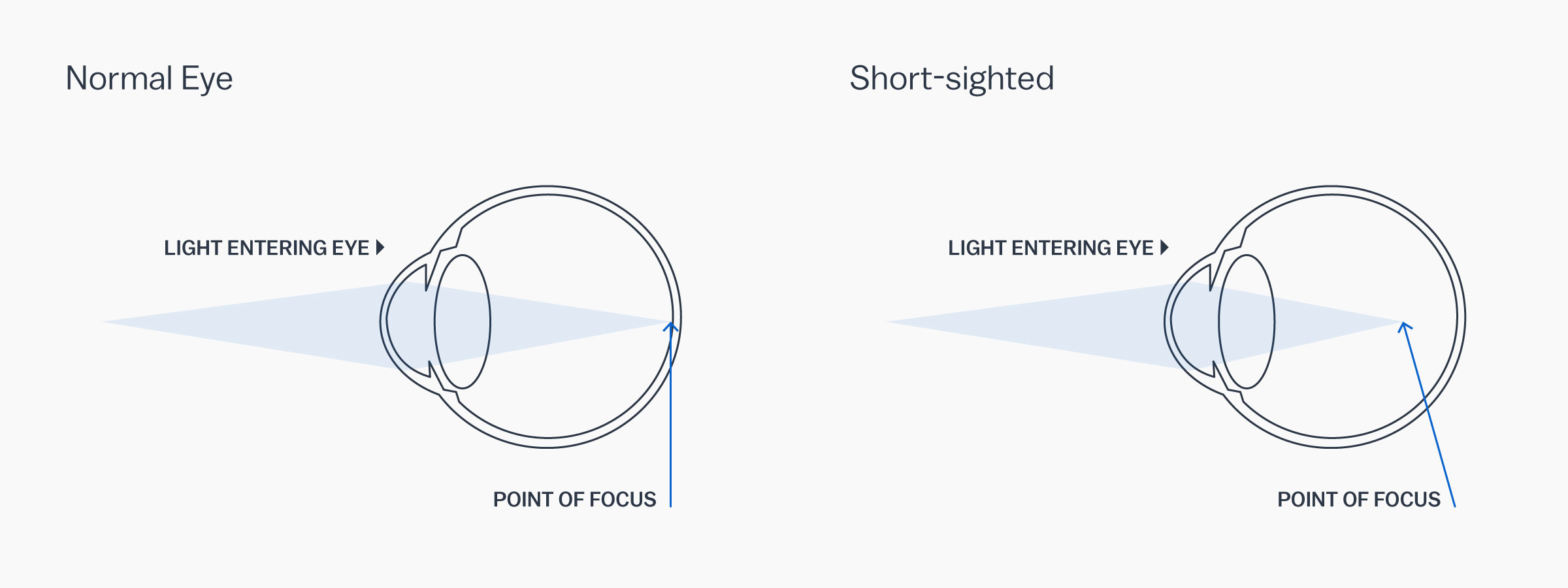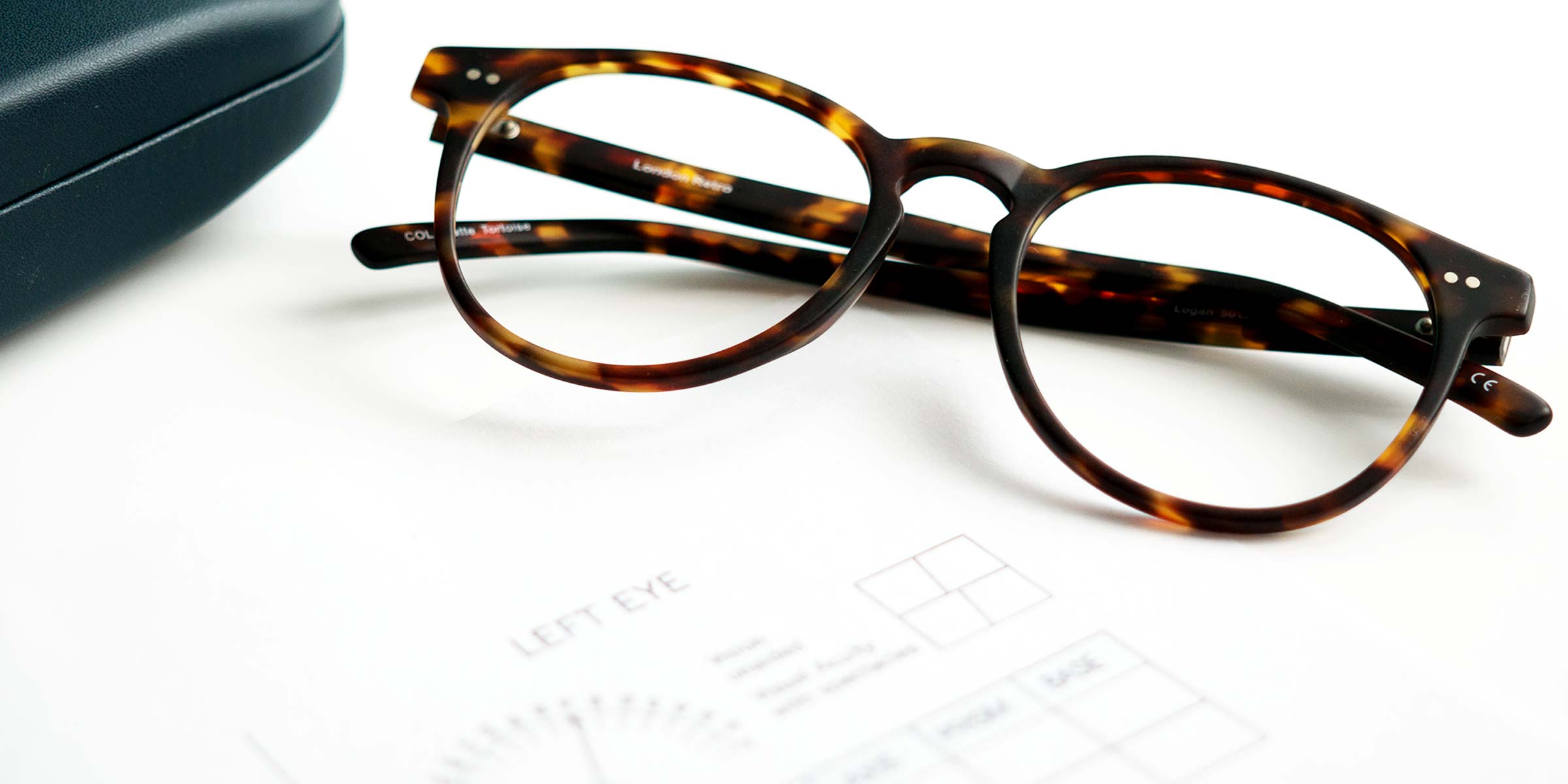or nearsightedness

What causes Myopia?
Myopia, or nearsightedness, happens when the eye is too long, or the focusing power of the eye is too strong, or a combination of both. This causes light to come to a focus in front of the fovea, which is the part of the retina that gives sharpest vision. The resulting image short-sighted people see is not clear.
Symptoms of Myopia
If you’re short-sighted, distant objects such as road signs won’t be clear, and nearer objects like your phone or computer screen will be much clearer. If it’s uncorrected you’ll suffer with eye strain, headaches, and your eyes will feel tired. That means it’s time to have an eye examination.
Most people know if they’re short-sighted, but if you’re unsure you can tell from your prescription. If the sphere value, often written as SPH, is preceded by a minus (-) sign then you’re short-sighted. The larger the number, the more short-sighted you are. Minus lenses are thicker at the edges than the centre.

How is Myopia corrected?
Myopia can be corrected by glasses, contact lenses, or surgery. Of course, glasses are by far the coolest option! You’ll still need a back-up pair if you wear contact lenses, and may even need to wear a small prescription occasionally if you have refractive surgery.
If you’re considering either contact lenses for the first time or refractive surgery we’d recommend you speak to the optician who tested your eyes to see if you’re suitable. If you have already worn contact lenses and have an up-to-date prescription you may want to learn more about our sister site Vision Direct.
Choosing glasses for Myopia
If you’re moderately or very short-sighted you’ll benefit from thinner lenses as the edge thickness of your lenses will be more visible.
Our Gold package lenses are ideal for prescriptions where the – value of your SPH prescription is between -2.50 and -4.00. Between -4.00 and -6.00 we’d recommend our Platinum lenses, and for any prescriptions over that our Diamond lens package will be more suitable. The Diamond package cannot be ordered online and is only available on phone orders. All our thinner lenses come with a tough, scratch-resistant anti-reflection coating and are 100% UVA/B blocking as standard.
If your prescription is over -5.00 we’ll need an accurate measurement of the distance between your pupils, often referred to as the PD. The link here will give you more information if your optician hasn’t already provided it for you.

Have a strong prescription but don’t want thinner lenses?
Of course that’s fine, but here are a couple of tips to consider to minimise the visible thickness of your lenses.
1. Think about a plastic-rimmed frame which will hide any edge thickness better than a metal-rimmed one.
2. Try not to order a frame with a lens diameter of more than 50mm. Our Best Fit Machine will help you narrow your search.
3. Order an anti-reflection coating to reduce troublesome reflections from the lens surfaces. Your lenses will look better and you will have clearer and safer vision, especially if you drive.
4. If you’re not sure please phone one of our qualified Dispensing Opticians or trained Optical Advisors who are there to assist in helping you make the right choice.
